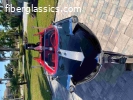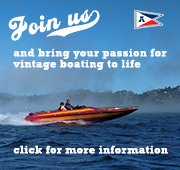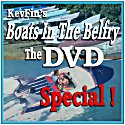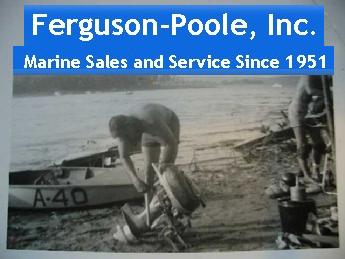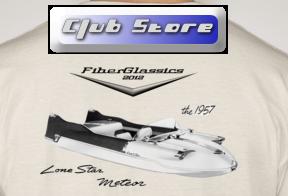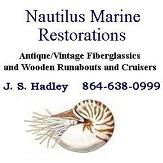An often misunderstood concept in power boating, is figuring out how to select the correct propeller for a given boat & motor combination. Understanding the "theory" behind this process can take some of the difficulty, and mystery, out of the process.
2 primary factors are involved - available power & hull efficiency
In theory, a 12 pitch propeller will move through the water 12 inches for each complete revolution. That would be true in application if there was no slippage between the prop and the water. Of course that isn't the case, all propellers have slippage, some more than others - due to limitations of design and application.
Your engine could have been fitted with a 9,10,11 or 12 pitch prop. Selection from OMC was very limited back in the day. Which prop is the "right one?"
Well, it depends on even more factors. You need to consider the weight of your boat, passengers, and gear, condition of the hull, altitude, condition of the motor, and what "type" of boating you plan on doing.
The problem with a boat, is that the faster you want to go, the more power you need. While this may be true with just about any vehicle or object, it is much more of a factor with a boat. It takes a lot of power to move a boat on top of water, and the faster you want to go the more power it's going to take.
The motor needs to rev up enough to build adequate power to put the boat up on plane. A "shallow" low pitch prop is good for this.
Once the boat is on plane, you want to be able to build speed. (a "tall" prop or higher pitch prop is good for this.
Here is where things get complicated. Outboard motors don't have a selection of gear ratios like a car transmission does. You are stuck with one gear ratio. So, you have to make the "best of both worlds" out of the situation.
You need a prop that will allow the torque to get going, while having the "legs" to give the highest top speed possible.
This is a case where you can't have your cake & eat it too.
Imagine a car that's stuck in 1st gear. You may be able to get going quite easily, but you'd be limited to going down the road at a slow speed. Keeping the throttle to the floor would likely over-rev and blow the engine.
Imagine that same car, but now it's stuck in overdrive. Would you expect to be at the base of a very steep hill, let out the clutch and go tearing up the highway? Of course not, the engine would stall as soon as the clutch was released.
Now apply those basic concepts to a boat.
Your challenge is to find the "right" prop that will put the boat on plane without the motor lugging excessively, and when on plane at full throttle, will keep the engine's top RPMs within the manufacturers rating. Having an outboard that is bogged down is just a bad as running one too fast, as both will eventually result in engine damage.
How to select the right prop?
Your best bet is to have your boat loaded with the "average" amount of people and gear that would most often be in the boat.
Be sure your engine is in good condition and is tuned properly for your given altitude.
Know what the recommended RPM operating range of the motor is.
Put a tachometer (that is working correctly) on the motor so you can monitor speed.
Select the prop that will get the boat up on plane & will give the highest top speed possible, while keping full throttle engine RPM within the recommended range.
Trial & error is the only way to accomplish the task. With a little experience, most people can easily select the correct propeller for their boat & motor combination.
Some experienced boaters carry a "speed" prop for cruising, and a low pitched "power" prop for pulling skiiers.
Always carry a spare propeller in you boat. Along with this, have all of the necessary parts and tools to change out your prop - when miles from the nearest dock or marina. This is one area where being prepared for the unexpected can save your marriage, and possibly, your life.



